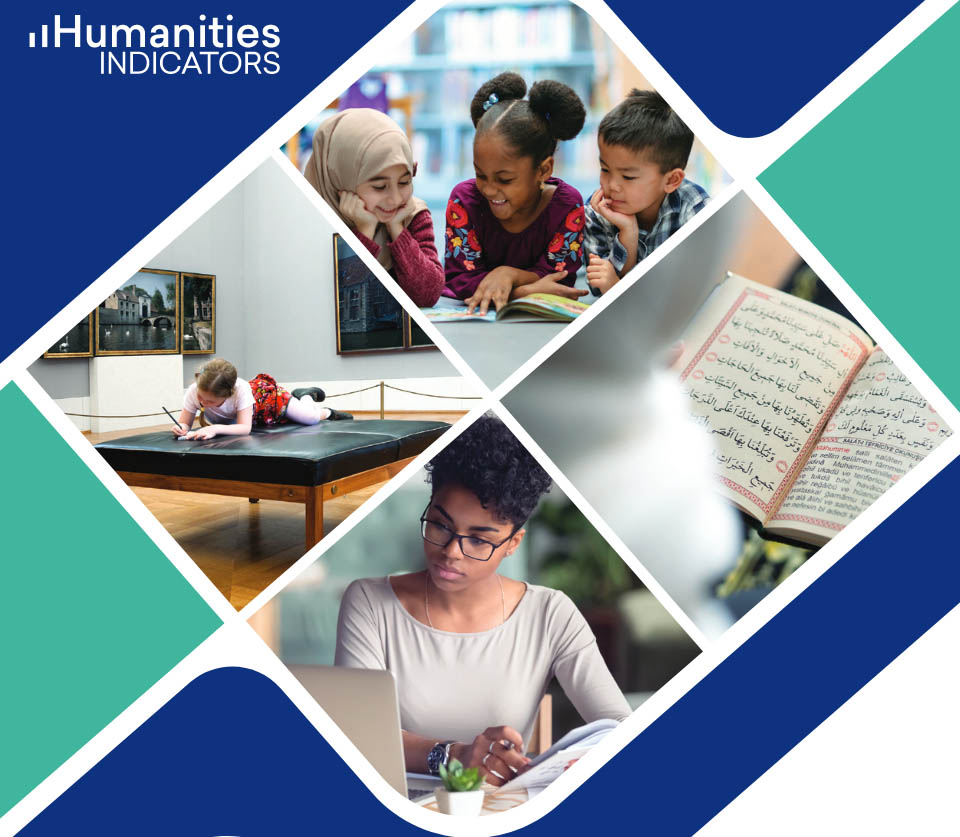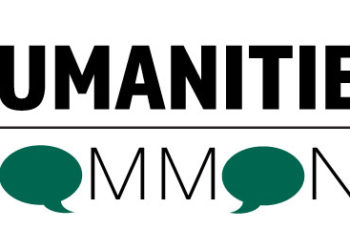Last month the American Academy of Arts and Sciences released a study funded by the Andrew W. Mellon Foundation, The Humanities in American life: Insights from a Survey of the Public’s Attitudes and Engagement. This work was undertaken by the Academy’s Humanities Indicators Project, which provides data on the humanities in the United States, “providing researchers and policy-makers in the private and public sectors with better tools to answer basic questions about areas of concern in the humanities.” The new report, which describes the humanities capaciously and beyond the academic disciplines and also includes the survey instrument, highlights how Americans understand and value the humanities. It is a parallel effort to the Academy’s project on The Public Face of Science, which issued reports beginning in 2018 with Perceptions of Science in America.
I spoke with Robert Townsend, Codirector of Humanities Indicators and the Academy’s Interim Director for Humanities, Arts, and Culture Programs about The Humanities in American Life survey findings and implications. Our interview has been edited.

Could you tell us about the Academy’s Humanities Indicators Project?
The Humanities Indicators goes back about 20 years. The National Science Foundation’s Science and Engineering Indicators were already well-positioned to provide the sort of data about the sort of challenges they were facing. And so the Academy developed the Humanities Indicators as a counterpart to that, really, to answer many of the same questions and to provide similar data about the health of the humanities. There is higher education as well as K-12 data, and information about public sites like museums. Norman Bradburn, who’s my co-PI on the project, is sort of the creator of the Indicators. He’s a former provost from the University of Chicago and a sociologist who has been doing survey research for decades — he literally wrote the book on how to ask survey questions.
I use your data all the time! Mostly I’m looking for information about history and historians, but do you have a sense of what most people look to Humanities Indicators for?
I was just looking at the data yesterday on our web traffic, and the most popular pages are related to race and gender of people who are earning degrees in the humanities, and reading and museum attendance. Some of the K-12 data, like the trends in qualifications of teachers, and in student test-taking — those sorts of things are always popular as well.
Tell us about this particular survey and report, funded by the Mellon Foundation. What are some of the big surprises?
From the beginning, the Indicators wanted to take an expansive approach to the humanities, trying not to think of it in terms of academic disciplines, but as a continuum from early childhood reading through college and a university education, which is, I think where most people will tend to think of it as existing, and then into more general public forms, such as museums. And so when we developed a survey, we continued that very expansive approach.
In the development of the survey, we realized that we basically couldn’t ask about the humanities directly so we ask most of the questions without ever using the word “humanities” until the very end. And then we sort of point back to the things that we just talked about and say, “so what we just talked about, people often put under the umbrella of the humanities.”
Mellon’s support was critical, because to survey 5,000 people is actually quite a generous undertaking. But it proved to be really valuable because there are so many people engaging with the humanities, and also so much diversity in how these people engage with the humanities. There are so many key points of near-unity, but a lot of diversity that’s worth looking at more closely.
The report analyzes the survey data to describe “Dimensions of the Humanities in Everyday Life,” “How Americans View the Humanities,” “The Humanities and Childhood,” and “Humanities in the Workplace.” Let’s take each of those four chapters and subjects in turn. As you’ve said, you defined the humanities pretty capaciously for the purposes of the survey. What are the big takeaways in the first chapter on how people are experiencing or actively seeking out the humanities in the course of their daily lives?
One is that people are identifying the humanities as both important, and as an important part of their lives. Maybe a surprise is that I went into this assuming that reading was going to be the most popular form of humanities activity, but it was interesting to see both watching shows with historical content and doing historical research online rise to the top. But I think beyond that, when we started looking at how these different activities related to each other, one of the other big surprises for us was just how little relationship there was between the different activities. People who watch historical films are not doing online research, as much as we think everyone is sitting and watching The Crown with their laptop open! The data shows these tend to be distinct activities, and that people do not necessarily do more than one of them.
In this next section you have brought some of the data together to describe “How Americans View the Humanities,” and it seems mostly they have a positive view?
A significant finding in how Americans view the humanities is that, yes, most people view them positively.
In terms of where we saw distinctions, although we saw some differences by gender, race, and even political leanings, people who say they haven’t really thought about their political ideology (about 12% of the population) were really negative about the humanities. So to some extent a divide was not so much left/ right as it was people who thought about their political beliefs versus those who don’t. Conservatives were a little bit more likely to buy into the negative view of the humanities but that was pretty marginal.
In the section on “The Humanities and Childhood” you’re obviously looking at schooling, from primary school on.
Yes, here the responses to the importance of learning different subjects kind of jumped out at me. So, 85% of respondents think that it’s important to expose children to some form of history. But languages fell relatively low in terms of the share of people who thought it was important for students to learn. Yet then on the later question about what do you wish you’d learned more of while you were in school — languages popped to the top! That was kind of a surprising takeaway. There was no follow-up to say, “how do you join those two thoughts together in your mind?” But that was really intriguing, and the fact that languages were also rated above a lot of non humanities activities. That was an interesting sort of puzzle to me as well.
And of course for those of us who are historians, we can take pride in the fact that history, especially when you combine world and American history, was pretty far up there.
The last section is what I think we might assume is a challenge for the humanities given a lot of recent developments in higher education: “Humanities in the Workplace.” Yet isn’t it the case that both employers and employees value the humanities?
Yeah, I mean, you certainly see that. There is a substantial share of the population engaging in what we articulated as being “humanities,” and using humanistic skills that one gets from a college education. I think we could fairly argue that there are a lot of people who are engaging in these skills who didn’t have a humanities major or even have a college education. Certainly the value that we saw in the survey assigned to humanities on the job fits with other surveys, from the American Association of Colleges and Universities, for instance, about what skills employers want.
One of the biggest surprises to me in this section was about engineering and computer science majors, who tend to be the most negative about the humanities and least likely to engage in a lot of humanities activities in their personal lives. They were also the least likely to say they didn’t use humanities skills at work. How do those pieces fit together? Again, it is a complex picture of perception versus experience.
Who do you think the report will benefit, and what groups will use it most?
The advocacy community is a key audience for this in part because for years they’ve been asking for this kind of data. We can only answer so much, but at least it casts a light on public engagement activities and answers some of the questions they’ve been asking us since I first started working on the Indicators. And certainly they’ve been good champions of the report so far. Another big audience is the state humanities councils who are in many ways on the front lines of public engagement.
Do you have in mind any next steps?
Ideally we’d like to refine some of the questions and survey again in two years or so. It can be hard to work from a data point at a single point in time. And we conducted the survey last November and obviously we’ve gone through a very different reality since then. We did do a kind of mini survey of how people were engaging with the humanities during COVID and the numbers didn’t really seem that substantially different. You might like to think, well, a lot of people are stuck at home. They’re going to read, they’ll spend more time watching history shows. But apparently not! In any case we would need more data to push this further but what we have here is a rich and useful set of responses.
Discussion
3 Thoughts on "The Humanities [Are Everywhere] in American Life"
The age at which language classes are offered is a big factor. If you start learning a different language in primary school, I think the research (https://osf.io/pyb8s/) shows that you integrate it more readily. But many US school systems do not offer other languages until middle school, and many people don’t take classes until high school when they want an elective. I wish we had a focus on learning languages from preschool up, like some countries do, so that it was less of a cognitive difficulty for US students.
To me, the language questions make sense in terms of “What do I want for the next generation?” Vs “What do I want for myself?”
For the next generation maybe I’m thinking of how they’re going to get decent jobs – so maybe I’m thinking they need skills in business, science or engineering. I’m also thinking about how we pass on our cultural/national identity (thus history). So I might forget about the jobs in translation and international business that languages open up.
If I think about learning languages and me, maybe I’m thinking how nice it would be to go to travelling and be able to speak the language. Or maybe I’m thinking it would be advantageous in business. I might forget about the basic skills I needed to get a job because I learned them so long ago.
Obviously this is just me speculating but I think that it’s at least plausible that these questions activate different priorities that explain the discrepancy in language priority.
The actual article for which the data in https://osf.io/pyb8s/ was complied is https://pubmed.ncbi.nlm.nih.gov/29729947/



